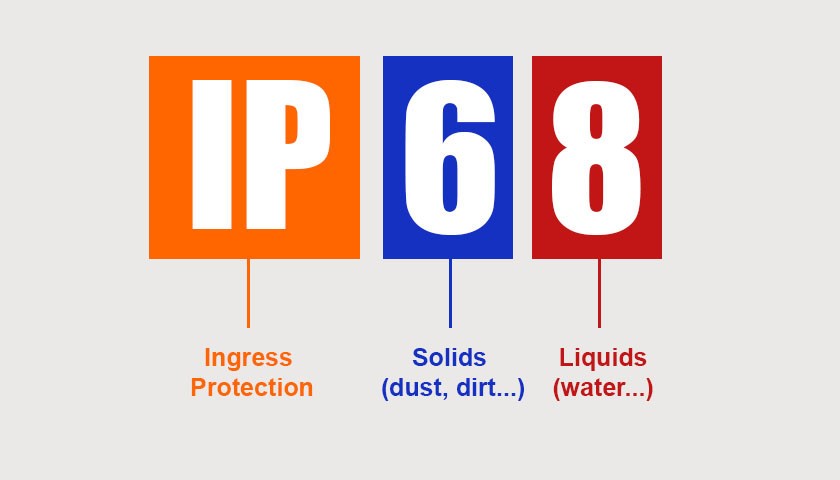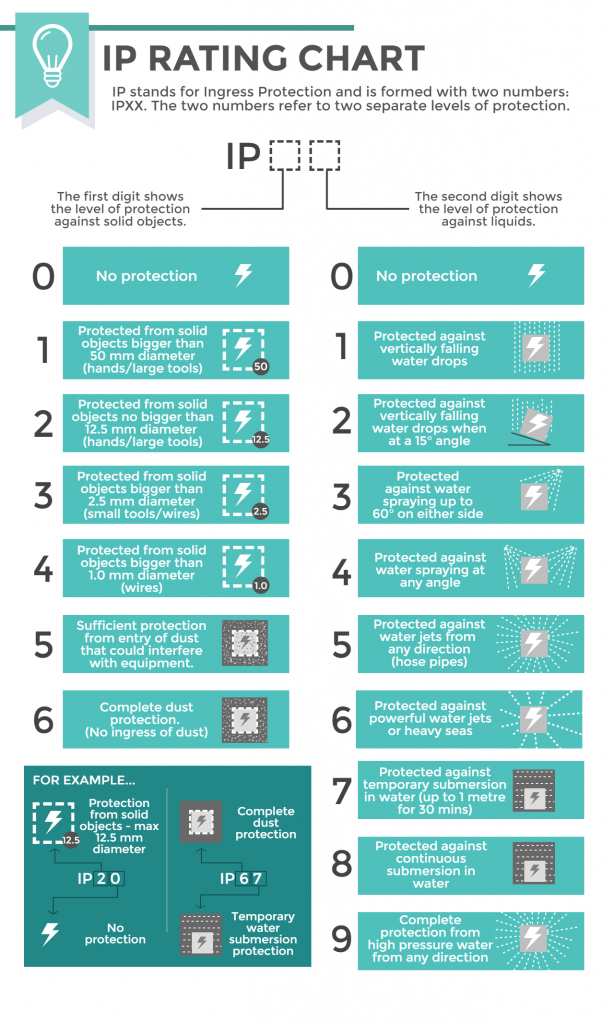What do IP Ratings mean
The “IP” in IP ratings most commonly stands for Ingress Protection. Purists might correct you to say that it’s really International Protection markings. But Ingress Protection is a good term to use because the most common ratings are all about ingress, or how easily things get inside. Understanding IP ratings helps you know whether you can use your tools in tougher conditions.
Manufacturers love to tout IP ratings on their tools. If you know what’s you’re looking at, they’re helpful. But many Pros just assume higher numbers are better and leave it at that. We’ll break it down for you.
IP RATING CODE BREAKDOWN – THE IP RATINGS CHARTS
Dust Resistance – The First Number
- 0: No rated protection
- 1: Objects greater than 50 mm (1.97 inches)
- 2: Objects greater than 12.5 mm (0.49 inch)
- 3: Objects greater than 2.5 mm (0.10 inch)
- 4: Objects greater than 1 mm (0.04 inch)
- 5: Dust Protected – dust doesn’t get in sufficiently enough to affect operation
- 6: Dust Tight – no dust gets in during an 8-hour test
Water Resistance – The Second Number
- 0: No protection
- 1: Dripping water at a rate of 1 mm per minute for 10 minutes vertically
- 2: Dripping water at a rate of 3 mm per minute falling at 15 degrees for 10 minutes (4 directions for 2.5 minutes each)
- 3: Spraying water at a rate of 10 litres per minute at any angle up to 60 degrees for 10 minutes
- 4: Splashing water similar to IPX3 test without shielding for 10 minutes
- 5: Water jets from any direction at a rate of 12.5 litres per minute for at least 3 minutes
- 6: Powerful water jets from any direction at a rate of 100 litres per minute for at least 3 minutes
- 7: Immersion up to 1 meter deep for 30 minutes
- 8: Immersion generally up to 3 meters for time agreed upon with the manufacturer
- 9: Power high-temperature water jets at a rate of 14 – 16 litres per minute with temperature of 80 C (176 F) for 2 minutes
You’ll see most tools start with an IPX4 rating and move up to IPX6. By the time you’re getting the IPX6 rating, it’s pretty tough to damage from water unless you’re leaving it out in the elements.
All you have to do now is match the IP ratings with the code. Here are a few examples:
- IP54
What does IP54 mean? Some dust will get in, but not enough to stop operation on a normal workday. Splashes of water will not get in and damage the tool. - IP56
What does IP56 mean? Again, some dust will get in, but not enough to disrupt operation. Powerful, high-flow jets of water also won’t get in. - IP65
What does IP65 mean? This is dust-proof and lower power water jets won’t make it in. But it won’t handle being submerged.


